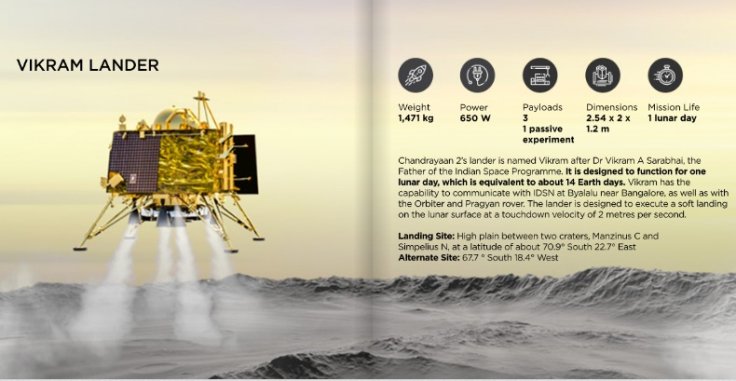The US space agency, NASA, said it has found the debris of India's moon lander that crash-landed on the lunar surface in September. The images released by NASA show the impact point where ISRO's Vikram Lander landed and the associated debris field. India's historic Chandrayaan 2 (Moon Vehicle 2) had aimed to land Vikram on a lunar highland about 600 kilometers from the south pole.
Marking a watershed in India's space exploration timeline, ISRO's GSLV-Mk3 rocket placed Chandrayaan-2 on the geostationary transfer orbit of about 35,000km minutes after it took off from the Satish Dhavan Space Centre at Sriharikota on July 22. A series of orbit-raising manoeuvres took the spacecraft to the elliptical orbit around the Moon in the next several weeks. The lander, Vikram, was expected to separate from the mothership with two orbit-lowering manoeuvres and then soft-land on the lunar surface.

Lunar Reconnaissance Orbiter Camera team releases mosaic of site
However, the Indian Space Research Organisation (ISRO) lost contact with Vikram lander shortly before the scheduled touchdown on September 7. Though ISRO worked on re-establishing contact with Vikram for several days, the mission was formally abandoned a fortnight later, after having failed to connect. The first images of the site of the hard landing came in the same month when the Lunar Reconnaissance Orbiter Camera (LROC) team released the mosaic of the site on September 26.
NASA said many people downloaded the mosaic to search for signs of Vikram but the first major clue came when Shanmuga Subramanian contacted the LRO project with a positive identification of debris. After getting the tip from him, the LROC team confirmed the identification by comparing before and after images of the site where Vikram crash-landed.
"The LROC team scoured the surrounding area in these new mosaics and found the impact site (70.8810°S, 22.7840°E, 834 m elevation) and associated debris field. The November mosaic had the best pixel scale (0.7 meter) and lighting conditions (72° incidence angle)," NASA said in a statement.
South pole landing bid
The lander-Vikram was supposed to land near South Pole of the moon on Sep 7, 2019 and then the Rover would roll out and carry out experiments on Lunar surface for a period of 1 Lunar day which is equal to 14 Earth days. The orbiter was supposed to continue its mission for a duration of one year.
If the mission was successful, India would have become only the fourth nation after the US, Russia and China to make a soft lunar landing when Vikram touches down on the lunar surface. However, lander Vikram went silent just 2.1 kilometres above the lunar surface after it was dropped from the main spacecraft orbiting the moon.









